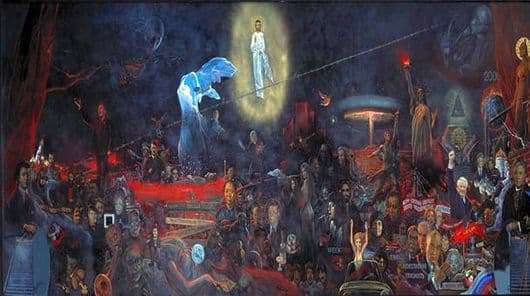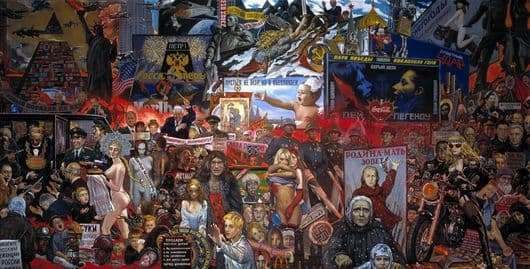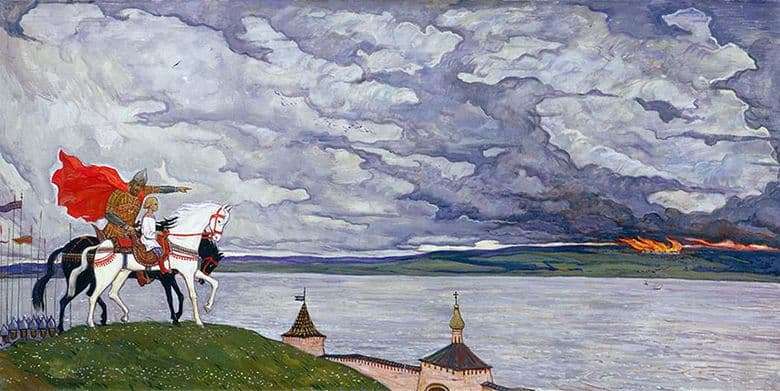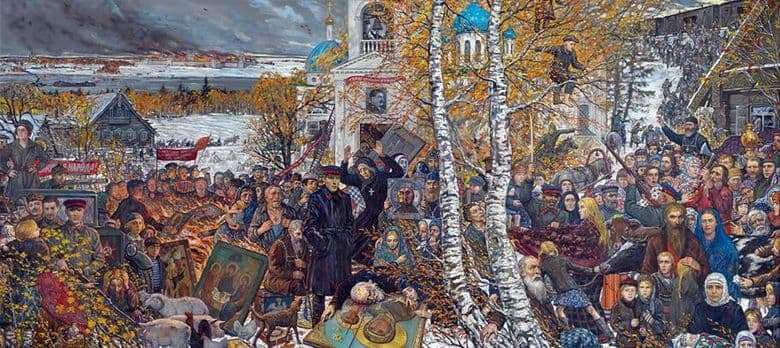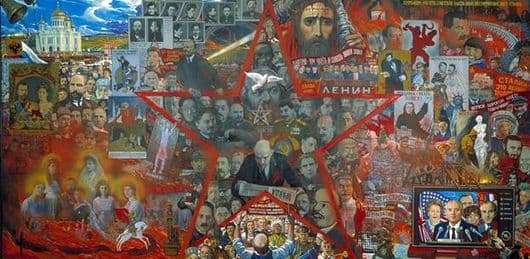
The very name is the reproach to the builders of the “new world” according to the theories of Marx and Engels, who created the very specter of communism, which had long wandered around Europe. This picture is a condemnation, a harsh and merciless sentence for all the bloody and cruel events that took place in the Soviet era. The picture is a collage. Immediately, the red five-pointed star occupying the center of the composition catches the eye, as if it focuses attention on the characters depicted in it, the main culprits of the terror… The picture is large, complex in terms of composition, multi-figure, multi-part.
Here you can see numerous repetitions of Lenin, as the main villain of communism – where he smiles slyly, somewhere with a beastly look and frantic eyes chanting. The faces and other of his associates and followers are so scary. Glazunov, an ardent opponent of communism, a defender of royal power, shows us the historical past, all those events, the prerequisites of terror. The canvas depicts Oliver Cromwell – the regicide, the French revolutionaries, the People’s Revolutionaries, and others.
On the left side of the picture are dreams of a happy and free country – Orthodox Tsarist Russia. Clear sky, domes, bell ringing, Holy Russia! … It also depicts both the common people of former Russia and cultural and political figures, Stolypin is a close-up picture, a poster with the Tsar and Tsarina. Slightly lower in a red bloody haze, as if embraced by a great fire, appears to us the martyred family of the last Russian emperor Nicholas II, with burning halos around their heads.
On the right side of the canvas – the face of Christ, who with a suffering look looks around at what happens… Below – Perestroika, glasnost, the collapse of the USSR – is modern, the same Russia far from ideal…
Description of the painting by Ilya Glazunov “Great experiment”
